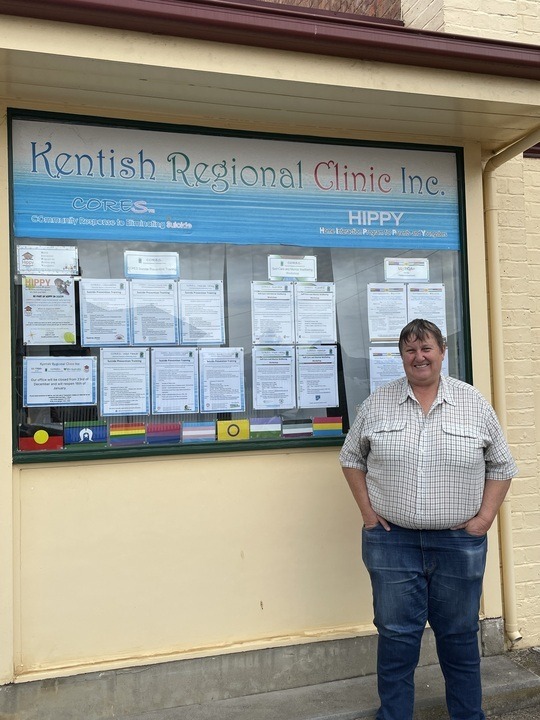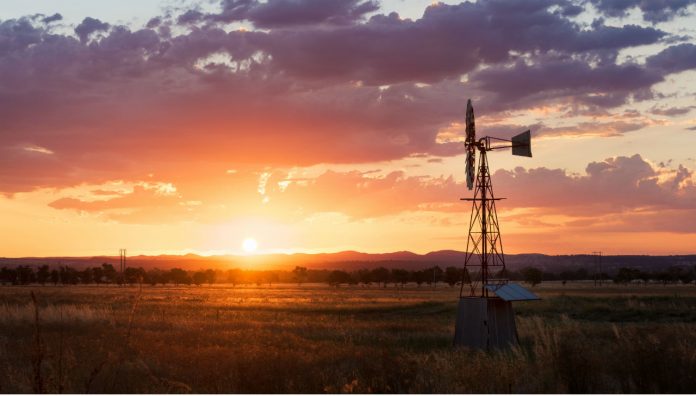Sharon Jones (she/her) describes outback Queensland, where she grew up, as ‘the most homophobic place in Australia’. As a child struggling to understand her gender, and later her sexuality, she spent much of her youth ‘feeling different, confused and very alone’. Suicidal by the time she was 12, she struggled to find help in her rural community.
‘I wish there was support for me when I … was struggling to make sense of my life. It would have made such a difference,’ Ms Jones said. ‘The sexuality and gender issues cast a shadow on my life. I didn’t have any concept that there might be somebody who could help me with that stuff. It’s a long, tough journey by yourself.’
Things have changed since Ms Jones was a child, and health services for lesbian, gay, bisexual, transgender, queer, intersex, asexual and other sex or gender diverse orientation (LGBTQIA+) people do exist in regional and rural areas. But members of this community still face barriers to accessing appropriate health care; from a lack of culturally competent providers to discrimination and issues with confidentiality and privacy in places where everyone knows each other.

And it’s not just inclusive and affirmative health services that are lacking. According to Writing themselves in 4, a survey of LGBTQA+ Australians aged between 14 and 21, young people in regional and rural areas also ‘experience higher rates of isolation and social discrimination’ than those in urban areas, with 53% of young people in inner suburban areas reporting feeling supported by their classmates, compared to just 30% of those in rural and remote areas.
Research also suggests LGBTQIA+ Australians in rural and remote locations are more likely to hide their sexuality from friends, have less involvement with other members of the LGBTQIA+ community, have fewer LGBTQIA+ friends and, among men, have higher levels of internalised homophobia than those in metropolitan areas. This means it is vital that pharmacies offer safe, inclusive spaces for patients of all genders and sexualities.
Lack of choice
The tyranny of distance means some Australians in rural and remote areas struggle to access health care that those in urban areas take for granted. While a patient living in a city might have a choice of five pharmacies within a 15-minute drive, those in small towns are often much more limited in their options.
‘Services are less common, not just pharmacies but GPs and other healthcare services,’ said Brent Mackie (he/him), Director of Policy, Strategy and Research at NSW LGBTQIA+ health organisation ACON. ‘This can pose all sorts of problems, not least because in many small towns everybody knows each other, so disclosing sensitive information can be fraught at times.’
Concerns about confidentiality in small communities can be detrimental to those seeking care, said LGBTQI+ Health Australia CEO Nicky Bath (she/her).
‘My background is in blood borne virus prevention and STIs, and I know people don’t want to walk into a local pharmacy seeking a service or a prescription to be filled that will give away quite personal information,’ she said.
‘There are certain medications, for example if you’re affirming your gender, that you might not necessarily want the only pharmacy in town to know about. Whereas in metro areas, you might be able to make a choice to go to a pharmacy that you’ve heard through your networks is a good place to go and is somewhere you’ll get good service.’
Creating safe spaces
The first step in addressing the barriers LGBTQIA+ people face in accessing health care is to be open, said TerryWhite Chief Pharmacist Brenton Hart MPS (he/him), who helped to develop an online learning series on LGBTQIA+ health for the banner group.
‘As pharmacists and pharmacy team members, I know we all have a willingness to learn and understand the perspectives of others,’ he said. ‘For me, improvement in the health outcomes for members of the LGBTIAQ+ community starts with education to understand the disparities that exist and the reasons why barriers to care occur.
‘The next thing is to involve the whole pharmacy team [and] engage with the LGBTQIA+ community. Inviting an advocate or ally along to support this conversation is an amazing initiative I would encourage.’
Ensuring the pharmacy has a consulting room for private conversations, and displaying the pride flag in a window and on staff name tags also helps to promote a safe, inclusive environment.
‘I have learned through this work that it’s ok not to get it right every time, as long as your heart is in the right place, you are trying and you are open to connecting with, and learning about, people,’ Mr Hart said.
‘It can be uncomfortable sometimes, but don’t be afraid to ask questions, ask for someone’s preferred pronouns and to understand their journey – it’s this compassion and empathy that will help create a more inclusive and safe space for everyone, not just in the pharmacy, but in the world in general.’
Over the years, Sharon has received great support from her local medical centre and pharmacist in Deloraine, Tasmania, who have helped her with her gender identity.
‘They are respectful and inclusive and this has ensured that I can access them when needed. This has renewed my faith in those services’.
‘The health services have improved a lot over the last 30 years and where they access LGBTIQA+ education they are even better’.
For more about LGBTQIA+ health care, don’t miss ‘Not yet equal’ in the February/March issue of Australian Pharmacist.



 John Jones MPS, pharmacist immuniser and owner of My Community Pharmacy Shortland in Newcastle, NSW[/caption]
John Jones MPS, pharmacist immuniser and owner of My Community Pharmacy Shortland in Newcastle, NSW[/caption]


 Debbie Rigby FPS explaining how to correctly use different inhaler devices[/caption]
Debbie Rigby FPS explaining how to correctly use different inhaler devices[/caption]




 Professor Sepehr Shakib[/caption]
Professor Sepehr Shakib[/caption]

 Lee McLennan MPS[/caption]
Lee McLennan MPS[/caption]
 Dr Natalie Soulsby FPS, Adv Prac Pharm[/caption]
Dr Natalie Soulsby FPS, Adv Prac Pharm[/caption]
 Joanne Gross MPS[/caption]
Joanne Gross MPS[/caption]





